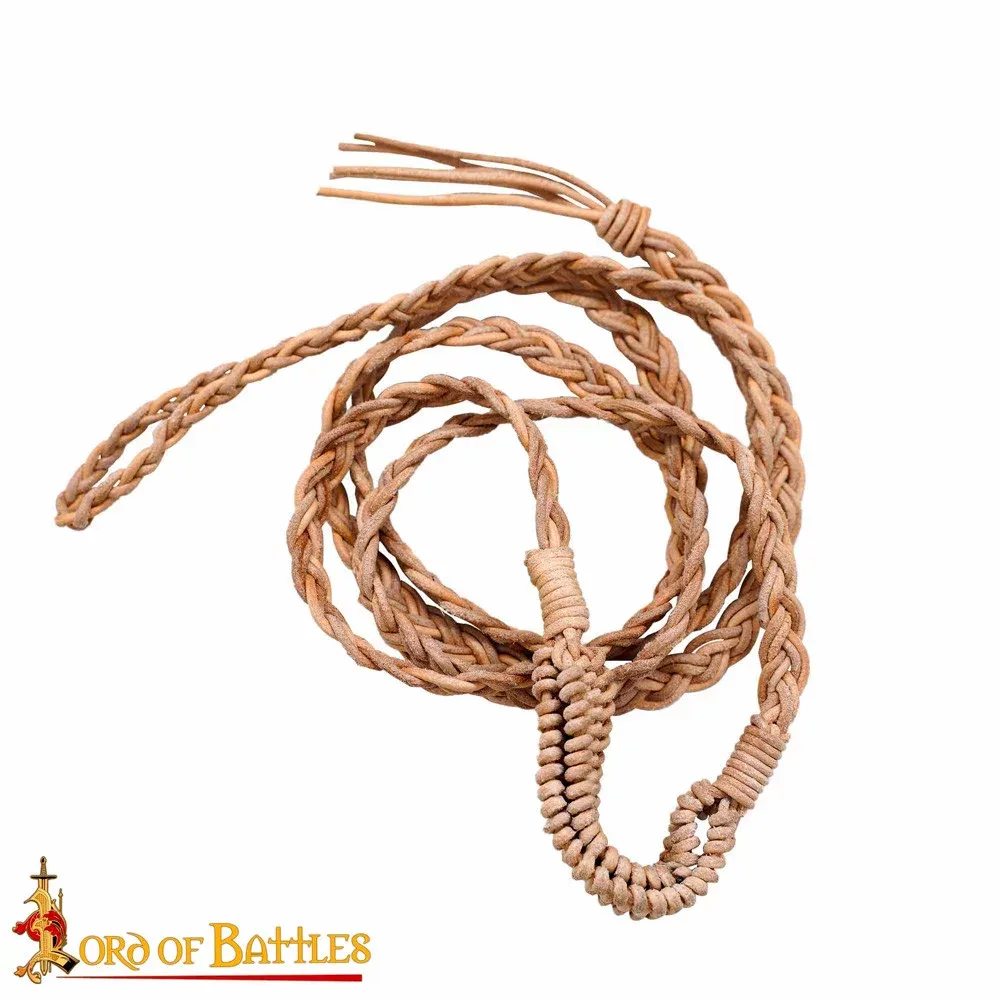What is a sling?
Slings have been an integral part of human history, standing out as one of the oldest known weapons. They not only testify to the ingenuity of our ancestors, but their elegant and simple design has endured for centuries. This article explores in detail the structure, origin, evolution, and various uses of the sling throughout time.
Structure and Functioning of the Sling
The sling consists of a simple yet effective structure: two cords or straps with a flexible pouch used to launch projectiles. During use, the projectile is placed in the pouch, and the user swings the sling to generate speed. By releasing one of the cords, the projectile is released, achieving great distances and causing a considerable impact on the target.

Origin and Evolution
The use of slings dates back to prehistoric times, probably at the end of the Paleolithic. Originally employed as a hunting weapon, the most consolidated archaeological evidence appears in the Neolithic, especially in the Near East. During this time, numerous projectiles made of fired clay have been discovered, suggesting their use in military conflicts in addition to hunting.
Use in Antiquity
Slings played a prominent role in the military realm of Classical Antiquity, used by civilizations such as the Greeks, Carthaginians, and Romans. Balearic slingers became legendary, hired as mercenaries due to their skill in handling the sling. These experts were trained from a young age and were known for their accuracy and power, qualities that allowed them to even penetrate armor.
Use in the Middle Ages
With the changing times, the Middle Ages brought the coexistence of the sling with innovations such as the first cannons. Although the effectiveness of the sling decreased in the face of metal armor, its simplicity and accuracy continued to be useful in sieges and battles that required a superior range.
.webp)
Cultural and Historical Contexts
Beyond the military sphere, the sling was used as an efficient tool for hunting and protecting against predators, widely employed in Mediterranean regions. Shepherds utilized it due to its low cost and effectiveness, and their skill in using the sling developed from an early age.
Notable Historical Examples
A significant example of the use of the sling can be found in Xenophon's work Anabasis, where it is narrated how a group of slingers, recruited in Rhodes, was able to confront Persian archers. This account highlights the strategic superiority of slingers in specific military situations.
Comparative Table of Slings in History
| Period | Main Use | Projectile Material | Example |
|---|---|---|---|
| Prehistory | Hunting | Stone | Archaeological remains |
| Antiquity | Military | Fired clay | Balearic Slingers |
| Middle Ages | Sieges | Stones / Metal | Medieval chroniclers |
| Pastoral Context | Protection of Herds | Stones | Mediterranean |
Over time, the sling has proven to be more than just a simple weapon; it has been a versatile tool used by various cultures in different eras. From its early uses in hunting to its strategic deployment in battles, the sling remains one of humanity's most emblematic weapons.




























